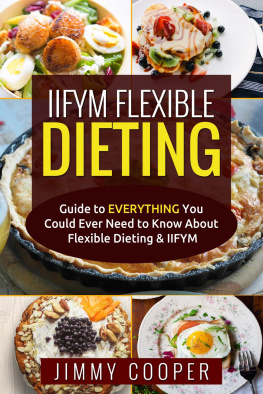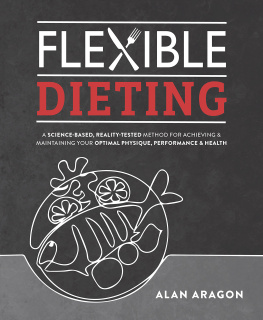If you would like to share this book with another person, please purchase an additional copy for each recipient. Thank you for respecting the hard work of this author. Otherwise, the transmission, duplication, or reproduction of any of the following work, including specific information will be considered an illegal act irrespective of if it is done electronically or in print. This extends to creating a secondary or tertiary copy of the work or a recorded copy and is only allowed with an express written consent from the Publisher. All additional right reserved.
Chapter 1
What is Macr o ?
Macros, short for macronutrients, are proteins, starches, and fats, the real supplements the body needs to work efficiently and proficiently, and the idea of tallying your macros is fundamentally ensuring that you get a particular measure of each in your day-by-day life by eating less carbs. Sugarthe sugars, starches, and filaments found in grains, organic products, and vegetableshave 4 calories for each gram. Protein, made up of corrosive amino chains basic for energizing the body also have 4 calories for every gram. Furthermore, fat is a higher-calorie macronutrient with 9 calories for every gram.
A full scale eating regimen takes the accentuation off calories and instead organizes the extent of proteins, fats and carbs, which are known as macros, hence the name.
Get the correct amounts of these nutrients and you'll become more fit, as well as be more successful at consuming fat and building slender muscles.
How about we examine each macronutrient to get an essential understanding of each.
Protein
Overview: Arguably the overlord in the realm of wellness nourishment, proteins are generally connected to building muscle and are essentially found in foods like meat and dairy. Be that as it may, its goes beyond muscles: it's the center segment for organs, bones, hair, compounds, and basically every kind of tissue in your body.
Proteins are made up of amino acids. Notwithstanding, there are 9 amino acids that are required for your body to work that your body can't synthesize itself. These are (appropriately) called essential amino acids, and the full 9 can be found from all meat sources. Shockingly for veggie lovers and vegetarians, it's uncommon to locate the full nine in vegetables and grains, so you have to ensure you eat a substantial assortment of foods in order to get all nine.
Starches
Overview: First companion then enemy, the food industry's association with starches has been whimsical to say the least. While it's actually the main macronutrient your body can get by without, doing so would be unpleasant. Carbs are your body's most effectively available wellspring of vitality, and is separated into glycogen (utilized by muscles) and glucose (utilized by the cerebrum).
Carbs can be partitioned into simple and complex starches. The two types allude to the length of the sugar particles. The shorter the atom chain is, the less demanding it is for your body to separate, so it's "easier" they are essentially sugars. Then again, bigger particles such as starches, are "complex" since it takes more time for your body to separate it into usable segments.
In the realm of macros, a carb is a carb, regardless of whether it originates from sugars or starches. Let's be clear: this isn't an underwriting depending on Pop-Tarts and treats to meet your health goals. Actually, what you will see is that subsequent to checking macros for awhile, you'll presumably float towards complex wellsprings of carbs for satiety's sake. In any case, the opportunity for decision is there, and unwinding this limit amongst "great" and "awful" nourishments is essential to build up a more beneficial association with what you eat.
Fats
Overview: Fats are a key part of many diets. However, fat frequently gets unfavorable criticism since it's the most calorie-thick supplement out there. In any case, they're very important to your body, from the spine to vital hormone production it protects nerves, skin, hair, and so much more.
There are a bundle of various kinds of fats. Out of every one of them, the principle three you ought to be worried about are trans fats, omega-three unsaturated fats, and omega-six unsaturated fats.
Trans fats, informally known as "frankenfats," have been reliably shown to heighten the danger of coronary disease, and it ought to be stayed away from. They're typically found in pre-packaged foods and different brands of margarine.
The last two are what's known as fundamental unsaturated fats. Like fundamental amino acids, your body can't make them so you need to acquire them through your diet. Omega-3's can be found in fish, flax, and walnuts (take note of that they're all the more effectively assimilated from creature sources), and omega-6's from practically a wide range of oils.
It is totally obvious that it is a different eating regimens than that ones which marks certain foods as awful and even cut out whole nutrition types. The macro diet assumes that all kind of foods and nutrition types can be part of a diet.
This theory depends on the logical investigations that show that the quantity of food eaten is the most vital factor in losing or putting on weight. This is desirable over dodging or restricting a specific type of food.
Tallying macros actually offers a few nutritious advantages. For the dieting amateur, managing your dinner meals by tallying macros is a decent method to understand portion control. Additionally, it's absolutely adaptable for your personal objectives and body type, and it's flexible as indicated by the full-scale eating routine outcomes you're seeing (that's the reason it's additionally called adaptable abstaining from food).
What's more, it likewise shares some shared characteristics with Weight Watchers and calorie-checking in light of the fact that you do need to track your admission and remain inside specific ranges.
Be that as it may, it's not quite the same as other weight-control plans since it's not a one-type fits-all way of deal with counting calories.
In reality, one of the issues with conventional weight-control plans is that they don't take into account what you're eating, and the exact amount of calories you're consuming. Certainly, parcel control alone may work for some time, yet unless you change to the correct foods your discretion will change in the long run.
With a specific end goal in mind, it might be advantageous to center around macronutrients instead of calories. Some individuals do well on bring down starches and fats, while others on lowing their sugar intake. Making (and hitting) macronutrient targets enables you to figure out which works best for you, and at that point adhere to that sort of eating routine without expecting a total wipe out of either fat or sugars.
Chapter 2
The Basics of IIFYM
On the off chance that It Fits Your Macros, or IIFYM as the "cool kids" call it, is moderately new as a brand, the dietary standards have really been around for a long time in the weight training world, just under another name (macro diet).
IIFYM is an approach that spins around meeting daily macronutritional consumption targets, and not on what you eat to get there.
How about we see what it is precisely IIFYM ordered:
1. At the point when first beginning this diet you have to ascertain the correct number of macros that you need to achieve every day. You can do this by utilizing an online adding machine which figures the quantity of calories and measure of protein, starches, and fats you'll require for the day. The online number-cruncher considers how physically dynamic you are, your weight, stature, and your objectives. You can discover such a number cruncher on iifym.com When you figure out your macros you'll see just how adaptable you can be.















